JF Ptak Science Books Post 2036
It was a curious thing to find, these engraved images of Egyptian dance and movement, seeming for all the world like motion shorthand, a sort of antiquarian Labanotation or kinetography. They appear in the stray atlas volume here by Juste Adrien Lenoir de La Fage (1801-1862), Histoire Generale de la Musique et de la Danse, which was published in Paris in 1844. I imagine that this is a surprise mostly to me--the Egyptians certainly knew that tey danced, and from the looks of it, they danced with athleticism.
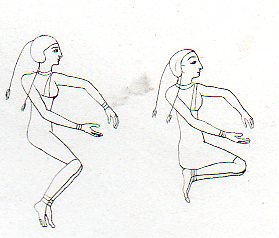 [Text can be found at the Haiti trust.]
[Text can be found at the Haiti trust.]
Most of the surprise part of this--the opening the book and having a sense of the "aha!" and deja vue-- were these images' association in my head with the work of the motion picture pioneer and all-around smart guy, Etienne Marey, who in the 1870's created what was essentially the
world's first "slow motion" device. One iteration of Marey's apparatus
was basically a long series of ganged cameras recording a motion for a 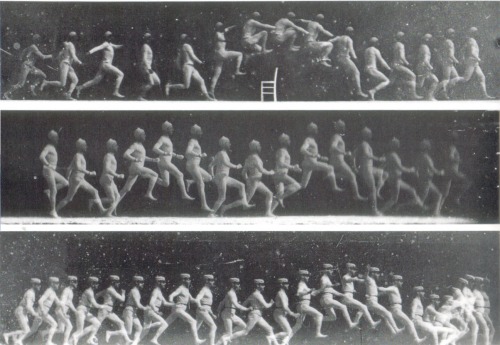 simple task at a given time frame and presented on a continuous strip
of photographic paper, sort of like a motion picture with the camera
speed set at three frames per second. The resulting images were
phenomenal and showed people for the first time the exactness of all
manners of simple motions--motions that no longer looked so "simple"
once all of its aspects could be studied from captured photographic
evidence. Even the act of hopping over a small stool or bending to pick
up a bucket of water were enormously revealing in a way like Robert
Hooke's Micrographia displayed the great detail and complexity
of the seemingly simple fly. Perhaps the most famous of Marey's series
of images was that of a galloping horse, which also for the first time
revealed what exactly the horse's legs were doing and proving that
almost every painter in the history of art represented the galloping
horse incorrectly. His series of photographs (as in the samples above and below)
show a fairly close fit to the work of the futurists (like for example
Duchamp) who would come into being after another four decades.
simple task at a given time frame and presented on a continuous strip
of photographic paper, sort of like a motion picture with the camera
speed set at three frames per second. The resulting images were
phenomenal and showed people for the first time the exactness of all
manners of simple motions--motions that no longer looked so "simple"
once all of its aspects could be studied from captured photographic
evidence. Even the act of hopping over a small stool or bending to pick
up a bucket of water were enormously revealing in a way like Robert
Hooke's Micrographia displayed the great detail and complexity
of the seemingly simple fly. Perhaps the most famous of Marey's series
of images was that of a galloping horse, which also for the first time
revealed what exactly the horse's legs were doing and proving that
almost every painter in the history of art represented the galloping
horse incorrectly. His series of photographs (as in the samples above and below)
show a fairly close fit to the work of the futurists (like for example
Duchamp) who would come into being after another four decades.
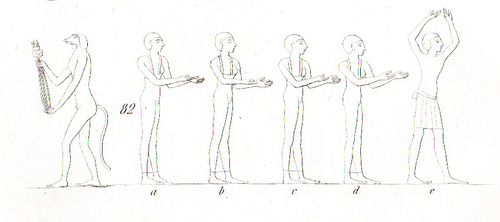 But the la Fage comes earlier still--granted, they are engravings, and they don't necessarily all show a progression of movement, though some of them do--but it makes them very interesting in a capturing-the-moment way like few people had done before.
But the la Fage comes earlier still--granted, they are engravings, and they don't necessarily all show a progression of movement, though some of them do--but it makes them very interesting in a capturing-the-moment way like few people had done before.
Etienne Marey, ca. 1875:
. And Marcel Duchamp's Nude Descending (1912):


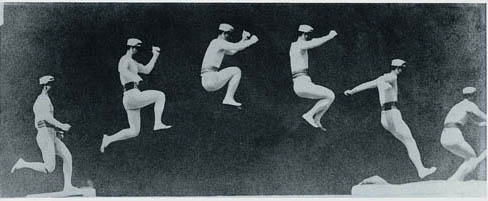

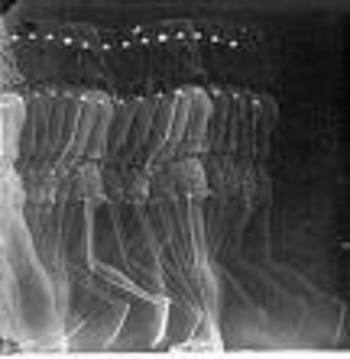
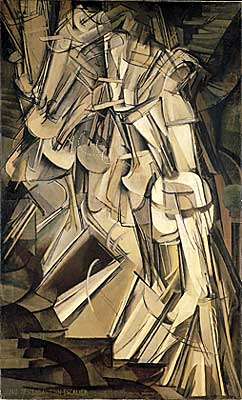
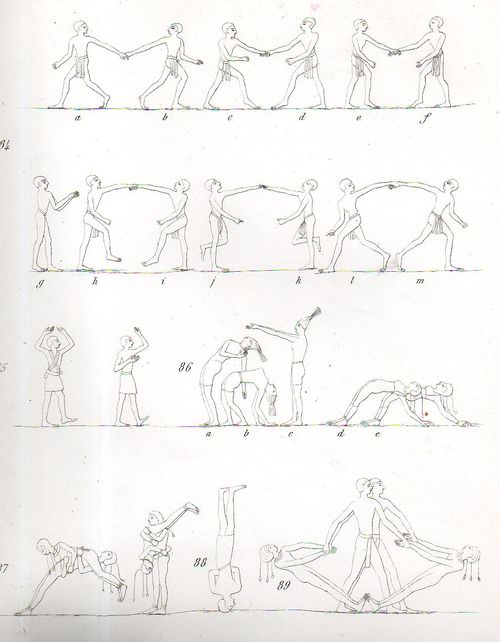
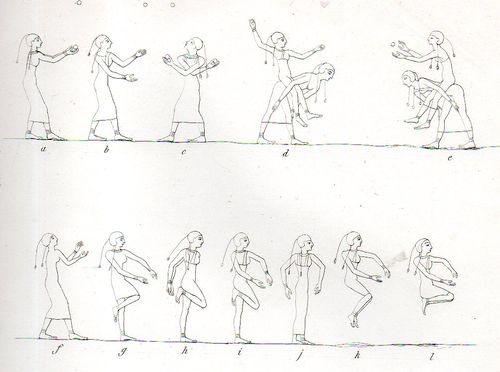

Comments